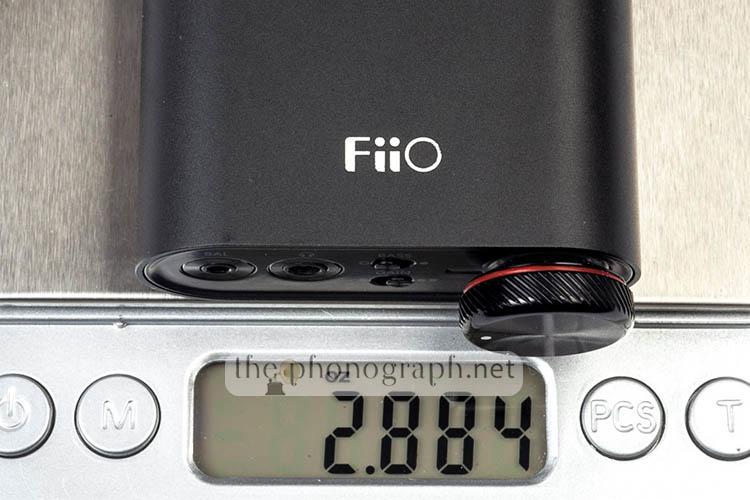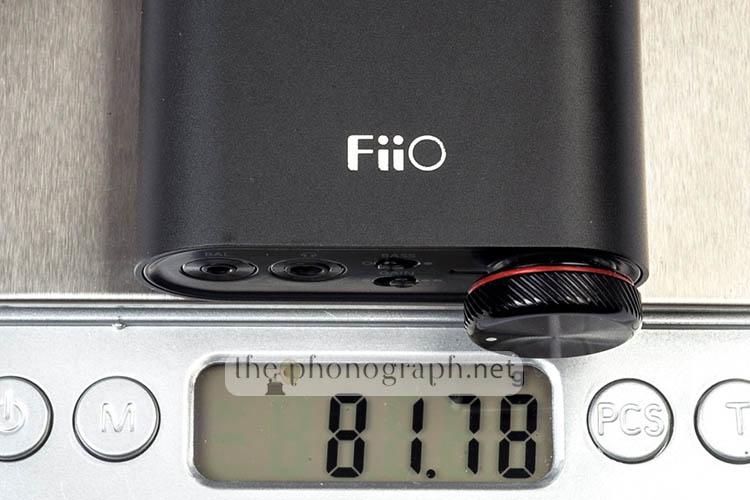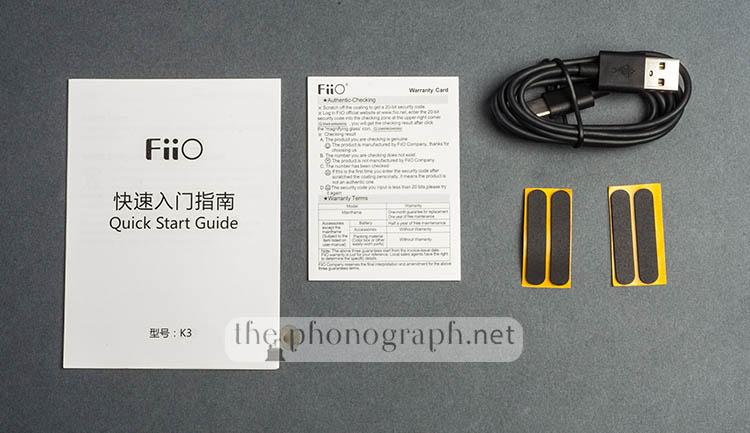FiiO K3
| USB Amp/DAC | AKM AK4452 DAC | XMOS XUF208 | OPA1612 LPF | 2x OPA926 | DSD256 | 320mW |
? FiiO K3, a freshly released headphone amplifier and USB DAC with a tiny size, impressive specs but super affordable price.
The FiiO K3 is the latest Amplifier/USB DAC from FiiO, introduced as the upgraded successor of the ultra-famous FiiO E10K and FiiO E10.
The FiiO K3 features ADC digital volume control, dual headphone outputs with a dedicated 2.5mm balanced output, 2 USB audio modes, native DSD256 support and decoding capability of up to PCM384kHz/32 bit.
Beneath the tiny housing, the FiiO K3 holds a AK4452 DAC, a XMOS XUF208 USB chip, 2x OPA926 driver OP Amps and a TI OPA1612 low-pass filter OP AMP.
The FiiO K3 is joining the newest products of the brand, among the:
- FiiO M9 – Android-based music player with advanced DAP/DAC specs
- FiiO FA7 – Quad Driver earphone
- FiiO M3K
– budget-friendly DAP/DAC
- FiiO BTR3
– Bluetooth amp
- FiiO BTR1K
– newest model of FiiO BTR1
line
- FiiO M6 – Android music player
The FiiO K3 is born as an advanced update of the FiiO E10K making it sit as the flagship model over every previous one on the E10 line.
FIND ALL: Earphones Scores Compared
MORE: In-Ear Headphones Reviews
SEE ALSO: FiiO DAP/DAC Reviews
FiiO K3 Review
Tests & Scores
AF
Advanced Features
The FiiO K3 features include advanced options such as:
- USB Amp/DAC: USB Amp/DAC with Type-C connector, capable of decoding up to 384kHz/32-bit – As an example, the FiiO M9 in USB DAC mode reaches 192kHz/32bit.
- Penta output connection: standard 3.5mm headphone jack, 2.5mm TRRS balanced output, USB Type-C audio output, SPDIF.
- Native DSD support: hardware decoding of DSD256 – In comparison the FiiO K3 vs FiiO E10
, the E10 was not able to decode DSD
- TI OPA1612 LPF
- Dual OPA926 op-amps
- XMOS XUF208 microcontroller: This is the same on both the FiiO K3 vs FiiO Q5
W
Weight
FiiO K3 weight in Ounces and FiiO K3 weight in grams.
MORE: In-Ear Headphones Weight Comparison
SEE ALSO: Earphones Size Comparison
A
Accessories & Packaging
The FiiO K3 unboxing results in an USB Type-C cable (used to power the unit and to connect to any PC and Mac) and 4 anti-sliding pads that can be stuck to the bottom of the unit – Amps rarely include more accessories than the FiiO K3 does.
The unit comes inside a clean looking rectangular packaging with a design and style inline with the FiiO M3K, FiiO BTR3 and FiiO M9.
![]()
![]() 3.25/5
3.25/5
D
Design
The FiiO K3 has curved edges and a clean looking design that gives it a classy feel.
The all-metal construction and the sandblasting process results in a pearled-black finish that adds to the clean aesthetics.
The FiiO K3 is not a standard amplifier regarding size and footprint. In fact, it is quite impressive how the brand was able to fit such an advanced and powerful amp inside the tiny housing.
To be more precise, the dimensions of the FiiO K3 are 70mm×58mm×22mm and has a total weight of only 82 grams.
On the top of the unit you will see the Hi-Res Audio certification and the FiiO logo.
FiiO K3 volume knob RGB light
The volume knob has a new RGB light that informs when the unit is powered on and also indicates the digital audio input sample rate by changing color.
- Green= DSD format
- Yellow= Sample rate higher than 48kHz
- Blue= Sample rate lower than 48kHz
![]()
![]() 5/5
5/5
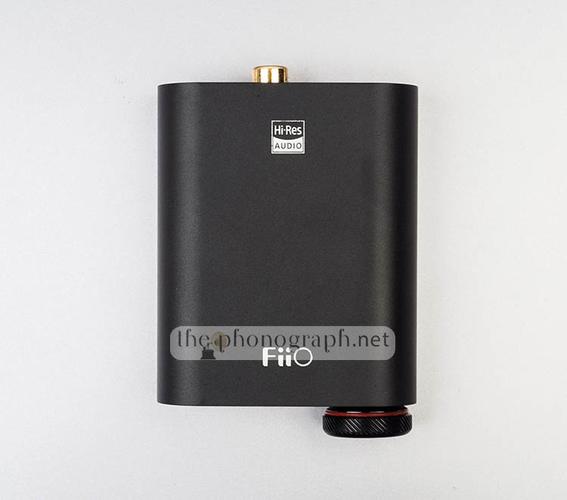
 FiiO K3
FiiO K3OC
Operation & Control
The FiiO K3 has 3 switches and a physical volume knob.
The knob has a digital ADC volume control and a smooth, stepless rotational movement with enough resistance as to give it a precise volume regulation.
The 3 switches of the FiiO K3 are placed separately, 2 of them are on the front panel and the third one can be found on the back panel.
The front panel switches turn on/off the Bass Boost feature of the FiiO K3 and set the Gain (Low/High), while the rear one works a switch between USB audio modes (UAC 1.0 and UAC 2.0)

The operation and control of the FiiO K3 is quite simple and has no learning curve involved. Any user will get the FiiO K3 working right out-of-the-box without issues.
How to power the FiiO K3:
The FiiO K3 gets powered directly from the USB Type-C connector that connects to your computer, there are no additional power supply nor chargers needed for the FiiO K3.
Nonetheless, FiiO recommends to keep the power input rate on DC 5V and 500mA.
Once the unit is correctly connected to your PC or Mac, the FiiO K3 can be turned on by simply rotating the volume knob clockwise until you feel/hear a click.
To confirm that the unit is On, an RGB light placed behind and around the volume knob will turn on.
![]()
![]() 5/5
5/5
MORE: Earphones Amplification Power Comparison
MORE: Best Basshead Earphones
SEE ALSO: Best Fun Sounding Earphones Chart


 FiiO K3 switches and connectors
FiiO K3 switches and connectorsCB
Construction & Build
The FiiO K3 is fully built in aluminum and feels as robust and well-constructed as the FiiO BTR3, FiiO M3K
and FiiO M9.
The K3 is not a device that tends to get easily scratched but to avoid any marks on the bottom of the unit, it is recommended to stick the anti-sliding pads that FiiO includes for free.
The volume knob, switches and plugs operate securely and connect firmly with no flimsy nor weak mechanical feel.
![]()
![]() 5/5
5/5
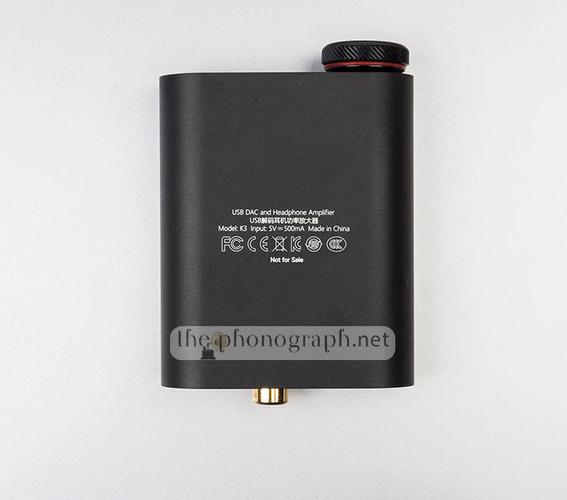
C
Compatibility
The FiiO K3 has a powerful (for the size) XMOS USB receiver chip – exactly the same as the FiiO Q5 Amp (flagship portable amplifier from FiiO).
The inner components of the FiiO K3 make them capable of decoding up to 384kHz/32-bit and native DSD256 – these specs are difficult to find in an amp of this dimensions and price, even the massively famous FiiO E10K could not reach this decoding level.
Moreover, the dual USB Audio modes of the FiiO K3 grant full compatibility with any PC and Mac. For devices where a driver cannot be installed or where any issue might arise with the UAC 2.0 mode, a simple switch to UAC 1.0 makes it driverless and fully working as a plug and play external DAC/Amp.
![]()
![]() 5/5
5/5
MORE: Best Headphones for Libraries Chart
SEE ALSO: Best Earphones for Bed

 FiiO K3 ports
FiiO K3 portsC
Connectivity
Despite the tiny size of the FiiO K3, the unit holds a penta output connector design and a USB Type-C plug.
The 5 output connectors included are:
- 3.5mm single-ended headphone jack
- 2.5mm TRRS balanced out
- Coaxial Out
- Optical Out
- Line Out
The output connectors of the FiiO K3, have the following technical specifications:
Coaxial-out specifications
- RCA for 192kHz, support DSD64 DOP
Optical-out specifications
- Up to 96kHz
3.5mm Headphone out specifications
- 220mW(16Ω); 120mW(32Ω)
Balanced Headphone out specifications(2.5mm TRRS port)
- 320mW(16Ω); 200mW(32Ω)
![]()
![]() 5/5
5/5
RELATED TO THIS: Active Noise Cancelling Headphones Reviews

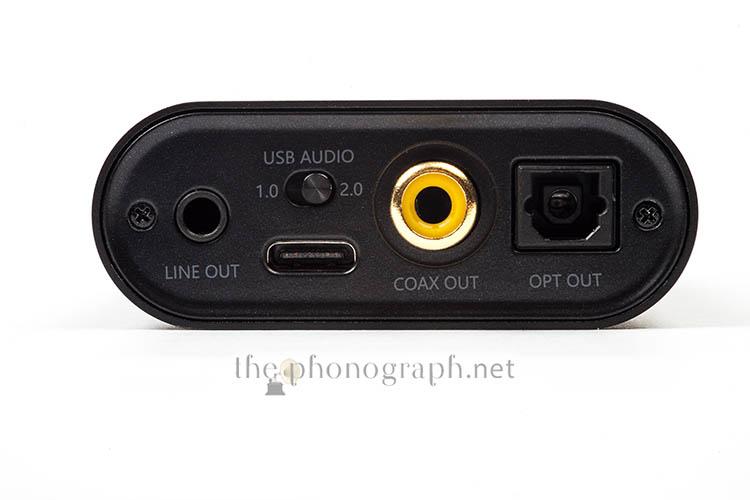
S
Sound
The FiiO K3 has 2 Gain and 2 Bass Boost modes; the Gain modes available are Low Gain and High Gain while the Bass Boost can be completely turned off or turned on – Bass Boost can be used in either Gain mode.
As the FiiO K3 offers all these modes we decided to test it and measure it’s frequency response curve in every combination available.
While using the FiiO K3 in Low Gain and with Bass Boost turned off, the amp showed a clean sound with no coloration nor degradation.
Our FiiO K3 frequency response graphs also showed a flat response with no boosting nor recessing on any audio frequency.
The new ADC digital volume control of the FiiO K3 revealed a very accurate and precise sensitivity to the knob regulation.
In addition to this, the amp did not present any channel imbalance while controlling the volume nor any of the typical “scratching” noises of devices with analogue potentiometers.
FiiO K3 Bass Boost tests
One of the 2 front switches of the FiiO K3 enables/disables the Bass Boost function.
According to FiiO, Bass Boost on the FiiO K3 should provide +6dB of boosting over most common bass audio frequencies.
Despite the brand’s statement, we decided to test and measure the Bass Boost performance and our FiiO K3 frequency response measurements verified that, indeed, it provides +6dB on the most efficient boosting range and starts to gradually cut-off above 125Hz to keep the sound clean and clear.
Of course, this pronounced bass boosting will modify the sound personality making it switch from an Amp/DAC with a flat response into a bassy, warm and vigorous one. Nonetheless, FiiO has not exaggerated here, introducing the right amount as to add energy and fun to any headphones sound signature without killing off the baseline high-performing personality of the FiiO K3.
FiiO K3 Gain tests
Gain tests
While testing the performance of the gain modes of the FiiO K3 we wanted to check if the unit was able to conserve the same flat and non-adulterated sound.
The test results and measurements showed that the FiiO K3 can add the additional gain by going from Low Gain mode to High Gain mode and keep the flat response with no additional sound variation.
At the same time, it is able to provide the exact same +6dB with Bass Boost turned on while being used either in Low or High gain.
The FiiO K3 technical specifications list a frequency response of 20Hz-80,000Hz, with a THD+N lower or equal to 0.004%, SNR of 113dB, line out reaching 1.9Vrms and output impedance of <1.04Ω.
FiiO informs that the FiiO K3 can safely drive headphones having an impedance 16Ω to 150Ω. Moreover, the tiny amp can deliver an output power up to 320mW(16Ω); 200mW(32Ω) (on TRRS 2.5mm balanced).
Testing the FiiO K3 with harder to drive headphones such as the AKG K701 and AKG K612 Pro
, the K3 managed to driver them without major issues once set to high gain.
![]()
![]() 5/5
5/5
RELATED: Best Earphones for Daily Commute
MORE: Most Comfortable In-Ear Headphones

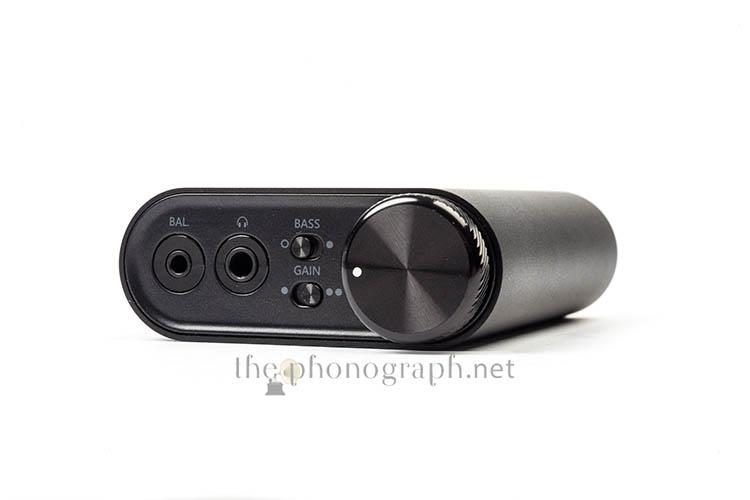
 FiiO K3
FiiO K3VS
FiiO K3 vs FiiO E10K
The FiiO K3 is released as an advanced replacement of the FiiO E10K and we understand that many of the users might be wondering what are the main differences that set the FiiO K3 apart and above the FiiO E10K.
Taking a look at both the FiiO K3 vs FiiO E10K, the FiiO K3 shows major technological upgrades and specifications, like:
• FiiO K3 vs FiiO E10K Bass Boost
Bass Boost
The FiiO K3 vs FiiO E10K Bass Boost shows an increment of +1dB on the FiiO K3 over the FiiO E10K. The FiiO K3 now offers a +6dB Bass Boost instead of the +5dB of the FiiO E10K.
• FiiO K3 vs FiiO E10K Output Power
The FiiO K3 vs FiiO E10K Output Power has been doubled for the FiiO K3, reaching up to 320mW (16Ω) thanks to it’s balanced output while the FiiO E10K reached a maximum output power of 160 mW (16Ω)
• FiiO K3 vs FiiO E10K DAC
The FiiO K3 vs FiiO E10K DAC capabilities now reach up to 384kHz/32bit on the FiiO K3 vs the 96kHz/24bit of the E10K. Moreover, the FiiO K3 now is capable of handling DSD256.
• FiiO K3 vs FiiO E10K output connectors
The FiiO K3 vs FiiO E10K output connectors is one of the most visible changes. The FiiO K3 offers 5 connections: 3.5mm, 2.5mm balanced, optical out, coax out and line out while the FiiO 10K was limited to 3 connections lacking a 2.5mm balanced headphone output connector and an optical out. Also, the coaxial out of the FiiO K3 has a higher 192kHz capability and supports DSD64 DOP (96kHz and no DSD support on the previous E10K model)
• FiiO K3 vs FiiO E10K Line Out
The line out of the FiiO K3 tops at 1.9Vrms vs the FiiO E10K limited at 1.3Vrms.
• FiiO K3 vs FiiO E10K Frequency Response
The FiiO K3 vs FiiO E10K frequency response differs on the upper end, with the K3 extending up to 80kHz while the E10K reached 20kHz.
• FiiO K3 vs FiiO E10K Volume Control
The FiiO K3 vs FiiO E10K volume control shows a huge improvement. The FiiO E10K makes use of an analogue knob control while the FiiO K3 has been upgraded to a better performing digital volume knob with no channel imbalance and more accurate sensitivity.
• FiiO K3 vs FiiO E10K USB and LED
USB and LED
The FiiO K3 vs FiiO E10K have different USB connections, the K3 introduces a USB Type-C connection and RGB LED light with sample rate indicators while the E10K had a micro USB connection and a blue-only LED for power confirmation.
MORE: Editor’s Picks Earphones Chart
MORE: Best Bang for the Buck Earphones

DR
FiiO Driver
The FiiO K3 offers 2 USB modes: UAC 1.0 and UAC 2.0. These modes have a main difference, the 1.0 mode is a driverless mode with a plug and play functionality while the 2.0 mode requires the installation of the FiiO USB Driver and Control Panel.
For on-the-go use and situations with compatibility issues, the USB Audio Class 1.0 driverless option grants easy connections and high quality audio up to 96kHz, 24-bit PCM audio.
While the Audio Class 2.0 with the installation of the FiiO USB Driver offers extreme audio quality up to 384kHz, 32-bit and DSD256 decoding.
The FiiO USB Driver for the FiiO K3 can be downloaded on this link from FiiO’s repositories.
SEE ALSO: Coupons – Discounts – Deals – Promo Codes – Sales Deals
Follow us:
Get the latest reviews on your favorite social network
FiiO K3 Scores
- Accessories - 6.5/106.5/10
- Design - 10/1010/10
- Operation & Control - 10/1010/10
- Construction & Build - 10/1010/10
- Compatibility - 10/1010/10
- Connectivity - 10/1010/10
- Sound - 10/1010/10
- Value for Money - 10/1010/10
Summary

- ✅ Digital volume knob with no “scratching” sounds
✅ ADC volume control with no channel imbalance
✅ High output power, up to 320mW (16ohm) – doubling the power output of the FiiO E10K
✅ 5 output connections: 3.5mm jack, 2.5mm balanced output, COAX out, optical out, line out.
✅ USB Type-C connection
✅ Up to 384kHz/32bit
✅ Bass Boost switch
✅ High and Low gain
✅ Native DSD256
✅ Easy to operate switches
✅ Elegant and clean design
✅ Crazy small-sized
✅ True +6dB of bass boost
✅ All metal construction
✅ Fluid and precise volume knob
✅ RGB light indicator
✅ Can be used with or without installing a driver (UAC 1.0 and UAC 2.0)
✅ Anti-sliding pads included
❌ An included L-shaped USB Type-C could had been handy for users with desktops that have a limited space
❌ Anti-sliding pads might not be very efficient on some surfaces
FiiO is rocking the amplifier, Music Player, DAC and Bluetooth transmitter market with their latest releases (FiiO M9, FiiO M3K, FiiO BTR3) and their budget-friendly prices.
The overall results of our tests revealed a little beast of an amp for a few bucks, a remarkable upgrade from the FiiO E10K and FiiO E10 with improved specs such as: decoding capability of up to 384kHz/32-bit, DSD256, 320mW of output power, ADC volume control, additional 2.5mm balanced output, +6dB of bass boost, etc.
The FiiO K3 offers one of the best affordable bang for buck Amp/DAC combo to date and is, yet, another great example of how much FiiO can pack at affordable prices - without leaving out specs nor performance.
FIND ALL OUR: Earphones Reviews / In-Ear Headphones Reviews
MORE: Best Earphones Charts
 Buy it from:
Buy it from:
SEE ALSO: Coupons – Discounts – Deals – Promo Codes – Sales Deals
FiiO K3 Frequency Response Curve – Low Gain and Bass Boost On and Off
FiiO K3 with 1MORE headphone.
Blue= Bass Boost On; Green= Bass Boost Off; Red= Reference without FiiO K3.

FiiO K3 Frequency Response Curve – High Gain and Bass Boost On and Off
FiiO K3 with 1MORE headphone.
Green= Bass Boost On; Yellow= Bass Boost Off; Red= Reference without FiiO K3.

FiiO K3 Frequency Response Curves



RECOMMENDED FOR YOU: Headphones Frequency Response Curves
SEE ALSO: KZ Headphones Frequency Response Curves
FiiO K3 Technical Specifications
| Type | Amp/USB DAC |
|---|---|
| USB DAC | Yes |
| Max output | 320mW |
| DSD | Yes, native DSD256 |
| SNR | >113 dB (A-weighted) |
| Gain | Low/High |
| Bass Boost | Yes, 0/+6dB |
| Drive ability | 16-150Ω |
| Frequency Response | 20Hz-80kHz |
| USB type | USB Type-C |
| Weight | Approx. 82g |
| Balanced 2.5mm output | Yes |
YOU WILL ALSO LIKE: Amazon Coupons & Deals
MORE: Coupons – Discounts – Deals – Promo Codes – Sales Deals
SEE ALSO: Banggood Coupons – Discounts – Deals – Promo Codes – Sales Deals
SEE ALSO: Aliexpress Coupons – Discounts – Deals – Promo Codes – Sales Deals
MORE: Hybrid Earphones Reviews
MORE: Single Dynamic Driver Earphones Reviews
FiiO K3 Full technical specifications
reported by FiiO
Model No. K3
USB Type-C
USB Audio Class UAC1.0 + UAC2.0
Volume Knob ADC
Gain L/H
Bass Boost 0/+6dB
Line Out 3.5mm
Headphone Out 1 3.5mm single-ended output
Headphone Out 2 2.5mm TRRS balanced output
Coaxial Out RCA for 192kHz, support DSD64 DOP
Optical Out Up to 96kHz
USB Chip XMOS XUF208
USB Driver ASIO/KS/DS/WASAPI/DSD DOP(Native)
Audio DAC AKM AK4452
LPF OP AMP TI OPA1612
Driver OP AMP OPA926×2
Output Power 1
(3.5mm headphone output) 220mW(16Ω)
120mW(32Ω)
Output Power 2
(2.5mm TRRS balanced headphone output) 320mW(16Ω)
200mW(32Ω)
Line Level 1.9Vrms
DAC 384kHz/32bit
DSD DSD256
SNR ≥113dB
THD+N ≤0.004%
Frequency Response 20Hz-80kHz
RGB indicator Sample rate ≤ 48kHz – Blue
Sample rate >48kHz – Yellow
DSD format – Green
Dimensions 70×58×22mm
Weight 82g
Coaxial Out RCA for 192kHz, support DSD64 DOP
Optical Out Up to 96kHz
Drive Ability 16-150 Ω
Power Input Recommend DC5V 500mA
Output Impedance <1.04 Ω
Crosstalk ≥70 dB (1 kHz)
MAX Output Voltage 7.39 Vp-p
MAX Output Current 81.6 mA



